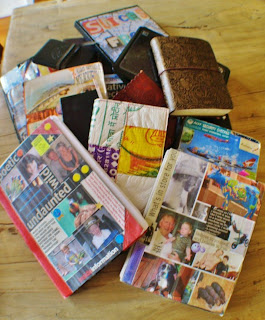Some Issues Around the Writer's Notebook

Writer Joan Didion said our (writer’s) notebooks give us away. We are revealed by the contents. Our notebooks are a place to collect and then take those collected items and use them to spark further original writing. As Ralph Fletcher, writer and educator reminds us, we use our notebooks to breathe in (collect) and breathe out (generate). With these thoughts ringing in my ears, I envisage notebooks brimming with words and ideas across a range of subjects and genres. The notebook is a place to experiment, take risks, make important discoveries or excavate memories and ideas from deep within. It can be a place to have fun with words. So why is it that in many classrooms when students take out their notebooks the pages reveal a picture far removed from the images I have just outlined? Why does one get the impression that the notebook in these school settings is only realizing a small part of its potential? Why is the critical ingredient –‘writing,’ so sadly lac...


